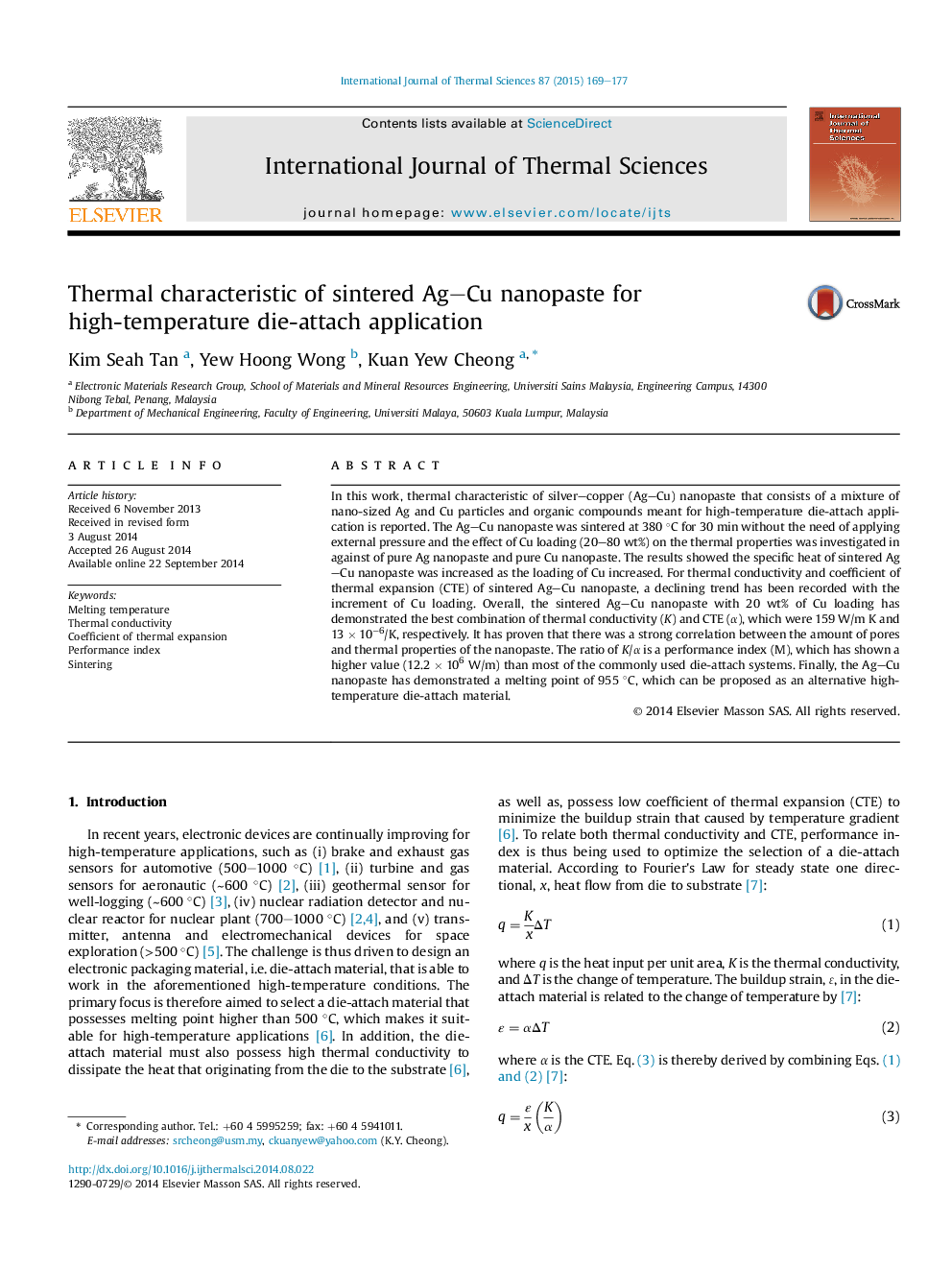| کد مقاله | کد نشریه | سال انتشار | مقاله انگلیسی | نسخه تمام متن |
|---|---|---|---|---|
| 668619 | 1458735 | 2015 | 9 صفحه PDF | دانلود رایگان |
• Ag–Cu nanopaste formulated by Ag and Cu nanoparticles with organic compounds.
• Thermal characteristic of nanopaste is investigated for die-attach applications.
• Nanopaste has low sintering temperature (380 °C) and high melting point (955 °C).
• Nanopaste has high thermal conductivity (K) and low CTE (α).
• The ratio of K/α is used to compare Ag–Cu nanopaste with other die-attach systems.
In this work, thermal characteristic of silver–copper (Ag–Cu) nanopaste that consists of a mixture of nano-sized Ag and Cu particles and organic compounds meant for high-temperature die-attach application is reported. The Ag–Cu nanopaste was sintered at 380 °C for 30 min without the need of applying external pressure and the effect of Cu loading (20–80 wt%) on the thermal properties was investigated in against of pure Ag nanopaste and pure Cu nanopaste. The results showed the specific heat of sintered Ag–Cu nanopaste was increased as the loading of Cu increased. For thermal conductivity and coefficient of thermal expansion (CTE) of sintered Ag–Cu nanopaste, a declining trend has been recorded with the increment of Cu loading. Overall, the sintered Ag–Cu nanopaste with 20 wt% of Cu loading has demonstrated the best combination of thermal conductivity (K) and CTE (α), which were 159 W/m K and 13 × 10−6/K, respectively. It has proven that there was a strong correlation between the amount of pores and thermal properties of the nanopaste. The ratio of K/α is a performance index (M), which has shown a higher value (12.2 × 106 W/m) than most of the commonly used die-attach systems. Finally, the Ag–Cu nanopaste has demonstrated a melting point of 955 °C, which can be proposed as an alternative high-temperature die-attach material.
Figure optionsDownload as PowerPoint slide
Journal: International Journal of Thermal Sciences - Volume 87, January 2015, Pages 169–177
